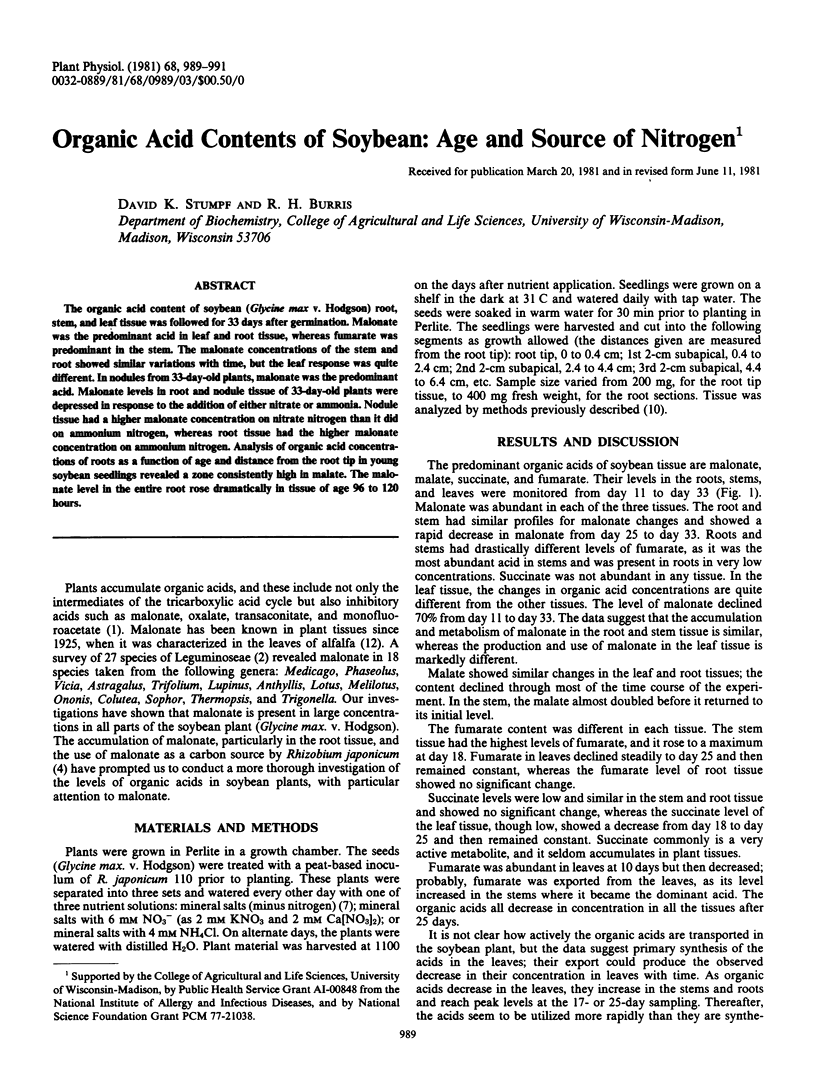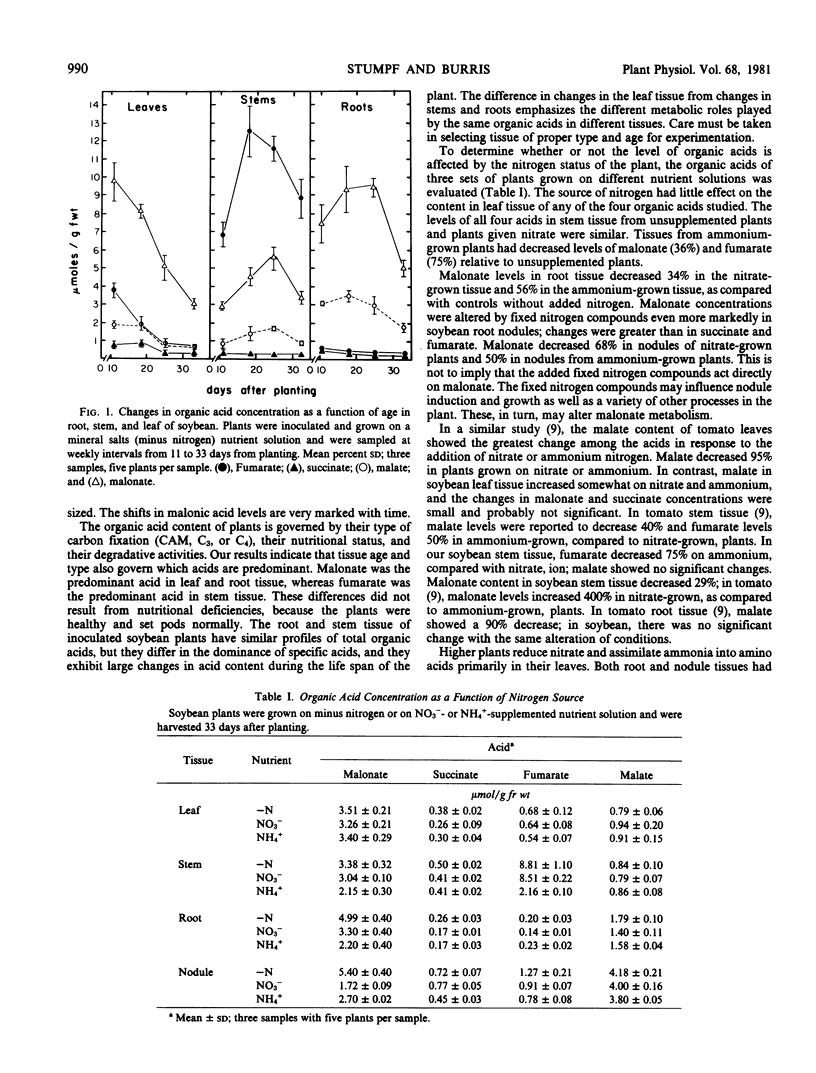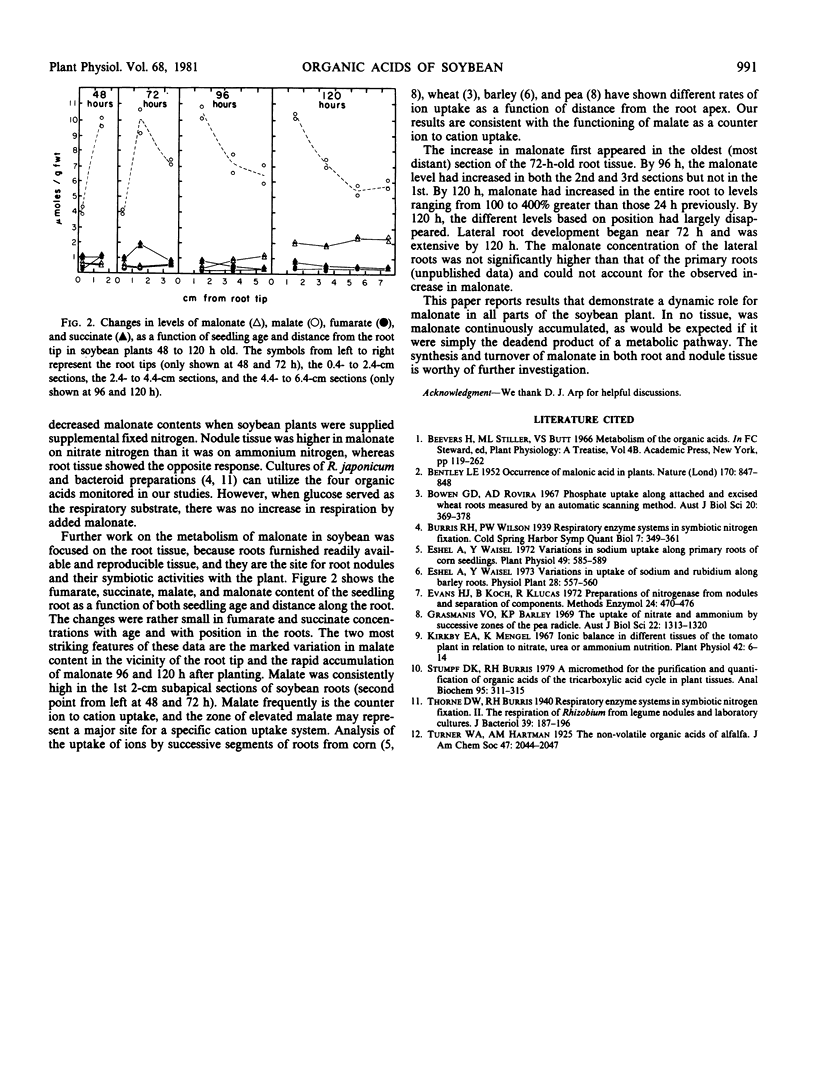Abstract
The organic acid content of soybean (Glycine max v. Hodgson) root, stem, and leaf tissue was followed for 33 days after germination. Malonate was the predominant acid in leaf and root tissue, whereas fumarate was predominant in the stem. The malonate concentrations of the stem and root showed similar variations with time, but the leaf response was quite different. In nodules from 33-day-old plants, malonate was the predominant acid. Malonate levels in root and nodule tissue of 33-day-old plants were depressed in response to the addition of either nitrate or ammonia. Nodule tissue had a higher malonate concentration on nitrate nitrogen than it did on ammonium nitrogen, whereas root tissue had the higher malonate concentration on ammonium nitrogen. Analysis of organic acid concentrations of roots as a function of age and distance from the root tip in young soybean seedlings revealed a zone consistently high in malate. The malonate level in the entire root rose dramatically in tissue of age 96 to 120 hours.
Full text
PDF


Selected References
These references are in PubMed. This may not be the complete list of references from this article.
- BENTLEY L. E. Occurrence of malonic acid in plants. Nature. 1952 Nov 15;170(4333):847–848. doi: 10.1038/170847b0. [DOI] [PubMed] [Google Scholar]
- Eshel A., Waisel Y. Variations in sodium uptake along primary roots of corn seedlings. Plant Physiol. 1972 Apr;49(4):585–589. doi: 10.1104/pp.49.4.585. [DOI] [PMC free article] [PubMed] [Google Scholar]
- Evans H. J., Koch B., Klucas R. Preparation of nitrogenase from nodules and separation into components. Methods Enzymol. 1972;24:470–476. doi: 10.1016/0076-6879(72)24092-7. [DOI] [PubMed] [Google Scholar]
- Kirkby E. A., Mengel K. Ionic balance in different tissues of the tomato plant in relation to nitrate, urea, or ammonium nutrition. Plant Physiol. 1967 Jan;42(1):6–14. doi: 10.1104/pp.42.1.6. [DOI] [PMC free article] [PubMed] [Google Scholar]
- Stumpf D. K., Burris R. H. A micromethod for the purification and quantification of organic acids of the tricarboxylic acid cycle in plant tissues. Anal Biochem. 1979 May;95(1):311–315. doi: 10.1016/0003-2697(79)90221-5. [DOI] [PubMed] [Google Scholar]
- Thorne D. W., Burris R. H. Respiratory Enzyme Systems in Symbiotic Nitrogen Fixation: III. The Respiration of Rhizobium from Legume Nodules and Laboratory Cultures. J Bacteriol. 1940 Feb;39(2):187–196. doi: 10.1128/jb.39.2.187-196.1940. [DOI] [PMC free article] [PubMed] [Google Scholar]


